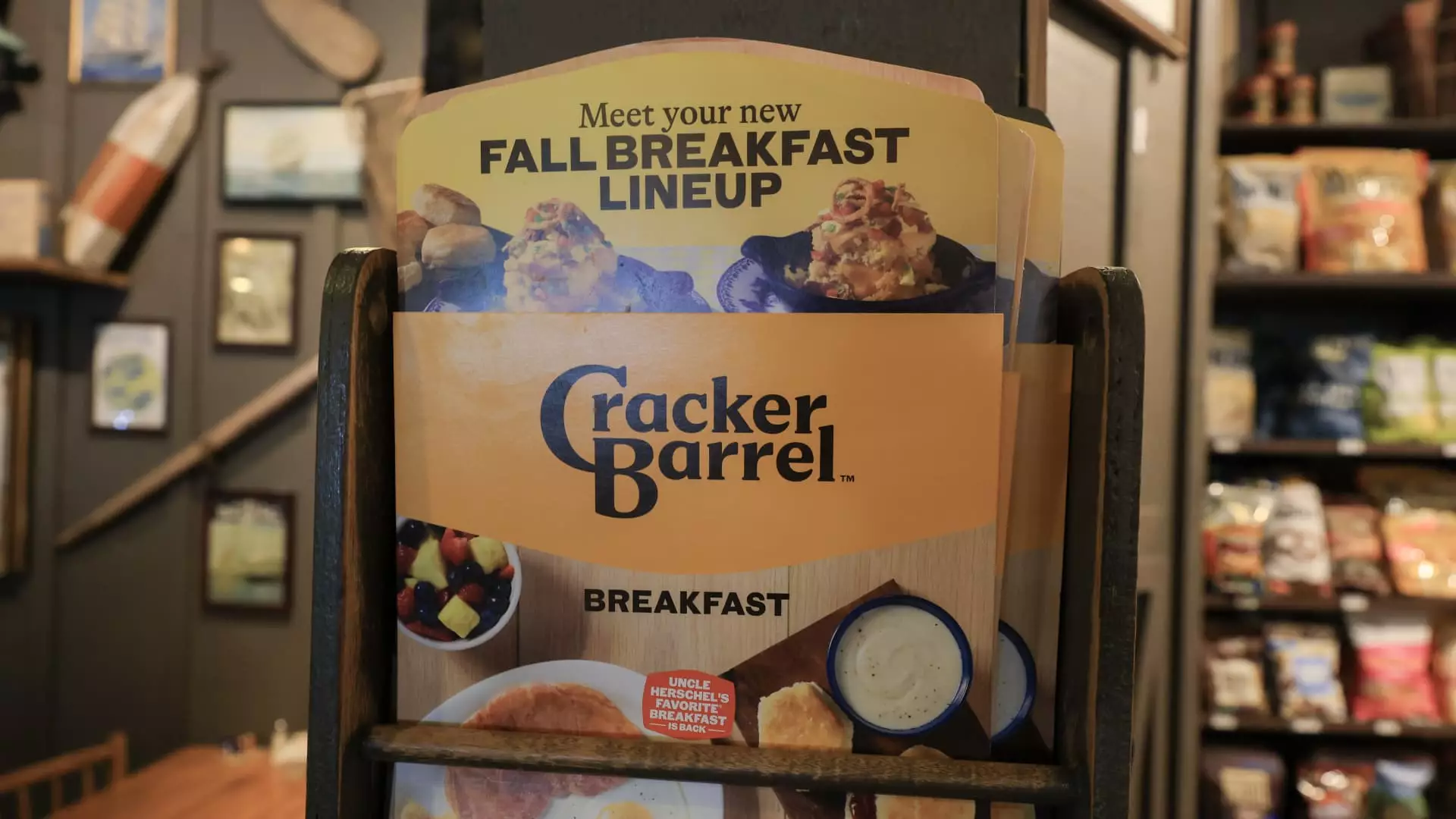The recent transformation of Cracker Barrel’s logo underscores a critical misstep in managerial judgment and brand stewardship. Traditionally, the company’s logo featured a warm, nostalgic image of a man leaning against a barrel—an emblem of country hospitality, authenticity, and tradition. By removing this powerful visual cue, the company risks diluting its core identity, making it vulnerable to misinterpretation or worse, outright rejection among its loyal customer base. Visual branding is more than mere aesthetics; it’s a storytelling device that conveys values and cultural heritage. When companies underestimate the emotional resonance of such symbols, they risk disconnecting from their audience’s perceptions and expectations.
The move to strip away the elaborative imagery in favor of a simplified, color-based logo signifies a shift towards modernity—yet this comes at a cost. Clean, minimalist branding often appeals to a broad demographic, but it must be executed with nuance. Otherwise, it risks appearing as a superficial attempt at reinvention, one that neglects the substantive elements that forge community loyalty. Here, Cracker Barrel’s decision hints at a broader tendency among corporations to chase fleeting trends instead of embracing their unique cultural identity. This reckless pursuit often results in signal failure, as early market reactions suggest.
Connecting Brand Refresh to Cultural Polarization
What elevates this controversy beyond mere aesthetics is its entanglement with cultural and political debates. The company’s CEO, Julie Felss Masino, claims the rebranding aims to reinforce “authentic charm” and “country hospitality.” Yet, social media buzz reveals suspicions of deeper motives—suspicions rooted in the broader ideological war over tradition versus progressivism. Critics, including high-profile figures like Donald Trump Jr., interpret the logo change as a calculated move to distance the brand from its American roots and heritage. These accusations are not unfounded in the current climate, where corporate symbols frequently become battlegrounds for ideological battles about diversity, inclusion, and national identity.
In this context, the brand’s attempt at a refresh appears tone-deaf or at least naive. Instead of strengthening trust, it exacerbates fears among conservative consumers that American cultural symbols and values are being deliberately erased or diluted to appease social justice narratives. This perception isn’t merely self-delusion; it taps into a genuine concern among millions who see the push for diversity initiatives as an erosion of traditional American values. When a brand with a storied patriotic and rural identity appears to capitulate or pivot too quickly, it risks losing its core demographic’s confidence and allegiance.
Market Risks and Internal Discontent
From a strategic standpoint, the backlash reveals a dangerous disconnect between corporate management and its customer base. The ticket does not just involve a logo redesign; it hints at potential internal misalignment about what the brand fundamentally stands for. Cracker Barrel’s relatively modest market cap of approximately $1.2 billion makes it particularly susceptible to credibility damage—lost consumer trust could translate into declining sales and market share.
Furthermore, the criticism extends beyond visual elements to the ambiance of their restaurant spaces. Customer complaints about the interior redesign reflect an environment shifting away from a cozy, country-style charm toward an overly sterile, modern aesthetic—further alienating those who cherish authenticity. Despite corporate claims that new designs are well-received, the reality on social media suggests an undercurrent of dissatisfaction, especially among long-standing patrons.
In the era of social media, this disconnect rapidly escalates, transforming localized dissatisfaction into a national debate. Cracker Barrel’s experience offers a cautionary tale: brands without clear, unwavering commitments to their identity risk losing relevance and, ultimately, their customers’ trust. The concern is not merely superficial; once a brand’s core symbols are compromised or perceived to be compromised, the path back to authenticity grows increasingly arduous. This tumult underscores the importance of strategic consistency—particularly for brands rooted in cultural tradition—and the peril of chasing superficial modernity at the expense of core values.

